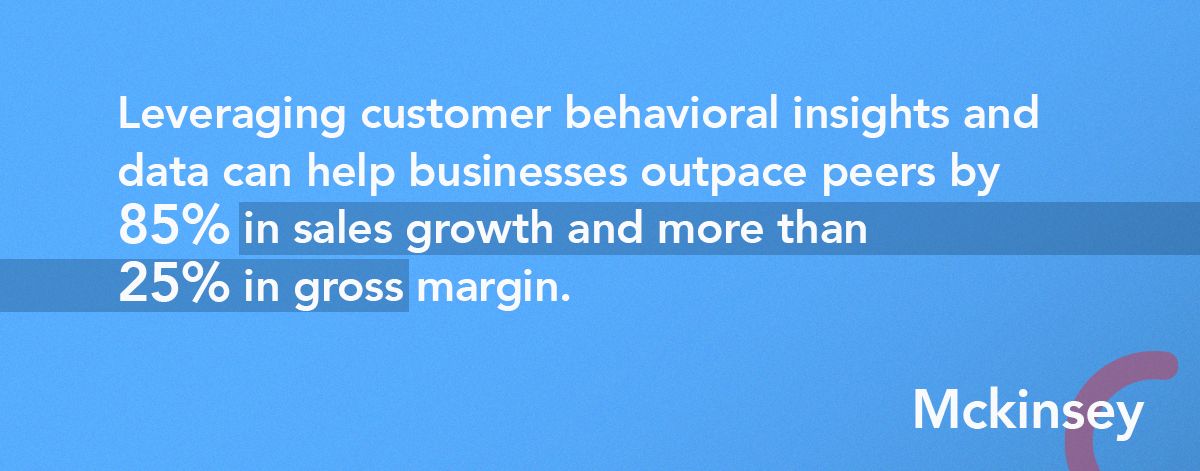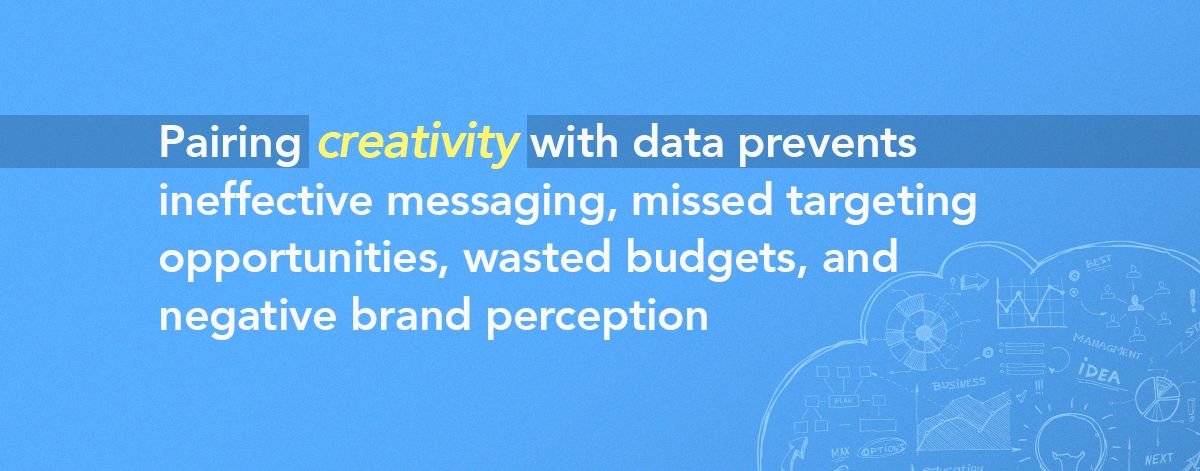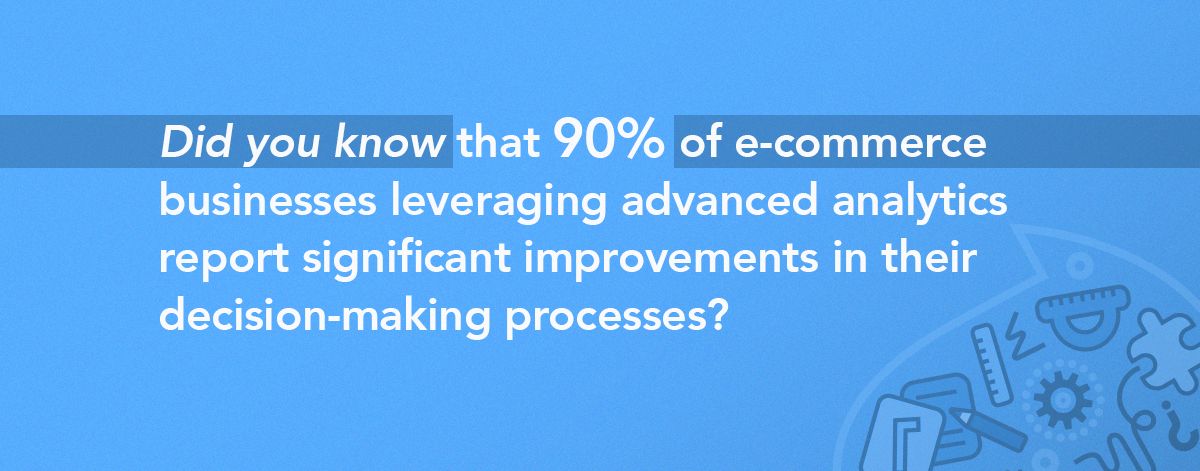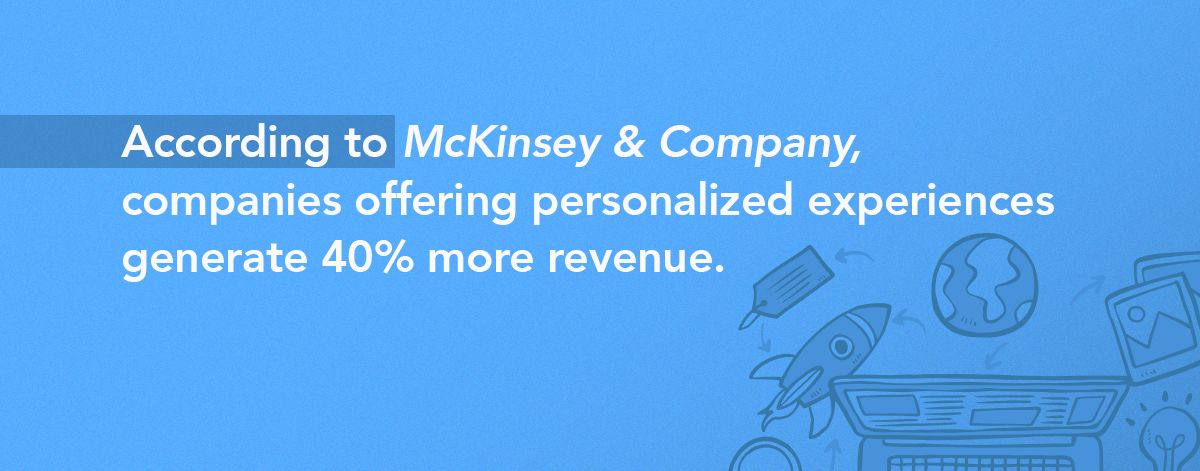Your Quick Guide to Advanced E-commerce Analytics: Sales + Growth, and More
- Is data analytics un-negotiable for business success? Yes!
- Why integrate data in your core e-commerce biz routine, serious reasons only:
- Without advanced analytics and reporting tools, e-commerce businesses face many challenges:
- Why is it important to understand advanced analytics?
- Let’s explore the power of advanced analytics tools in e-commerce
- Key features to look for in your analytics tool
- Build your custom analytics toolbox for e-commerce insights
- How can Qbatch help? By decluttering data and removing the mess!
- Frequently Asked Questions
Meet Carlos!
He's a trendy online gadget shop owner, always looking for the best strategies to expand his business.
Unfortunately, he’s confused about which marketing channels yield the best results, or how to gather the right data about what works and what does not.
He feels overwhelmed and frustrated.
Sounds familiar?
Running a business is juggling many responsibilities at once. You need to manage stock, sales, and customer service while making critical decisions about growing your business.
Decisions about launching new products, ordering profit-driven inventory, investing in marketing campaigns, and optimizing digital channels majorly drive your success sustenance.
So, is there an efficient way to scale your e-commerce business? The answer is using analytics tools.
These tools consolidate all your data in one place, making it easier to make informed decisions for your business.
In this blog, we'll explore the benefits of e-commerce data analytics and recommend some of the best tools to analyze your data.
First things first:
Is data analytics un-negotiable for business success? Yes!
In the latest century data is the goldmine to produce the results your customers want. Satisfied customers trust your products and services and therefore come again and again to buy from you.

Basically, happy customers = skyrocketing business growth. Big time!
But, knowing your customers’ needs and pains is one thing but acting up is another.
You can acquire as much data as you want but changing into actionable insight is your responsibility. So, it’s two things:
- Acquiring relevant data.
- Acting on this data.
Let’s discuss these points one by one.
"Data-driven" isn't just a buzzword; it's a verb. Embrace it and make it happen!
Everyone loves to toss around the term "data-driven," but won’t actually practice it.
But what do we mean when we say “data?”
- Data is a game-changer to build personalized, relevant customer experiences, and boost sales. There’s no second-guessing about it.
However, the statement “data collection is key to a successful online business” sounds like old news.
Everyone is going bonkers over customer data, and how to install it in your business growth strategy and see quick results.
Woosh! The daydream is over!
See, it’s great that you want to know everything about your customers.
But, there’s a thing, You can collect endless amounts of customer data without seeing any real benefits. Why? Because you're not focusing on the basics.
Why integrate data in your core e-commerce biz routine, serious reasons only:
Make wiser decisions
Data-driven insights lead to better pricing, more effective marketing, and product development that aligns with customer desires. Following data instead of “gut feelings” ensures you make informed, impactful decisions.
Know your customer better
Data takes the mystery out of customer behavior. By analyzing what your customers want including their habits and needs, you can offer a tailored shopping experience that improves satisfaction and drives business.
Go pocket smart
Allocating resources based on data means focusing on what truly matters. This efficiency reduces costs and boosts your return on investment (ROI).
And never stop evolving!
Using data to upgrade your business growth practices keeps you ahead of market changes and customer preferences. This culture of continuous improvement helps you stay competitive and relevant.
In simple words, you become friends with your customers if you integrate their needs into your business decisions. :trophy:
However, as mentioned earlier, merely gathering customer data isn't enough.
You should integrate data into all key business areas — branding, development, operations, user design, product development, and advertising.

For example, creating accurate user personas and profiles based on behavioral insights allows you to tap specific customer needs and expectations. This ability to stay market-ready with data-driven approaches gives your e-commerce business a competitive edge.
Advertising, too, becomes more effective with data. Targeting the right audiences, personalizing content, and optimizing ad performance lead to successful campaigns.
So, don’t just hoard data, drive it to discover new opportunities and make strategic decisions. Data is no rocket science — just good business.
Here’s a kick: Creating value through advanced analysis is key. Advanced data analytics is beyond critical for your data-driven business growth.
Without advanced analytics and reporting tools, e-commerce businesses face many challenges:
Blind decision-making
They may lack crucial information about customer behavior, marketing campaign performance, and product popularity. This can lead to wasted resources on ineffective strategies.
Customers remain a mystery
They can't identify customer preferences, buying patterns, or pain points. Personalization becomes impossible, hindering customer satisfaction and loyalty.
Inventory woes
Predicting demand and optimizing stock levels becomes a gamble. Stockouts frustrate customers and lost sales are a constant threat.
Marketing in the fog
They can't track the return on investment (ROI) of marketing campaigns. Budgets are allocated blindly, with no idea what's truly driving sales.
Steering by gut, not data
They lack the insights to understand customer behavior, website performance, and marketing effectiveness. Decisions become a guessing game, leading to wasted resources and missed opportunities.
Falling behind the competition
Without benchmarking against data-driven rivals, weaknesses remain hidden. Valuable market share is lost to competitors who leverage the power of analytics.
Challenges Without Advanced Analytics
- Blind decision-making leads to wasted resources on ineffective strategies
- Customer preferences remain a mystery, hindering personalization and satisfaction
- Inability to predict demand and optimize stock levels risks stockouts and lost sales
- Misallocated budgets due to poor ROI calculations
- Competitors leveraging analytics gain a market advantage, leaving you behind
Without the right tools to unlock and interpret your data, you're essentially flying blind.
Lacking advanced analytics means missing out on crucial insights about your customers, optimizing your operations, and making smart decisions. This leads to missed opportunities, inefficiencies, and ultimately, lost revenue.
Don't let valuable insights slip through the cracks — equip your business with the tools it needs to thrive.

Analytics are a game-changer in the world of online retail.
Why is it important to understand advanced analytics?
Basic analytics provides a high-level overview of your e-commerce data, like website traffic and sales figures. Advanced analytics digs much deeper, using sophisticated techniques to uncover hidden insights and patterns. Think of it as going from a blurry picture to a high-resolution image, revealing details you never knew existed.
Difference between basic and advanced analytics
Imagine you're analyzing website traffic. Basic analytics tells you how many visitors you have and where they come from. Advanced analytics uses this data to identify visitor segments (e.g., new vs. returning customers), analyze their behavior on your site (e.g., what pages they visit, how long they stay), and even predict which ones are most likely to convert into paying customers.
Simply speaking;
Basic Analytics focuses on descriptive statistics, historical data, and simple trend analysis.
Advanced Analytics uses predictive and prescriptive analytics, machine learning, and complex algorithms to forecast future trends and provide strategic recommendations.
Let’s explore the power of advanced analytics tools in e-commerce
While basic data provides a snapshot of your e-commerce performance, advanced analytics takes things a giant leap forward. Here's what sets it apart:
Machine Learning and AI
Advanced analytics goes beyond basic calculations. It leverages sophisticated algorithms and artificial intelligence (AI) to mine complex datasets, uncover hidden patterns, and even predict future trends.
Imagine turning raw data into a crystal ball, giving you a glimpse into what customers will want and how your business can adapt.
According to a 2023 Forrester Data and Analytics Survey, 59% of businesses using AI report significant cost savings, proving its power to streamline operations. Even more impressive, 47% boast AI-based products generating revenue.
In the fast-paced retail world, AI-powered predictive analytics is key to personalization and making timely business decisions.
Unstructured Data Processing
Advanced analytics isn't limited to website traffic numbers. It goes deeper into unstructured data like customer reviews, social media buzz, and chat logs, providing a holistic view of customer sentiment and behavior. Consider this: unstructured data is expected to explode to over 180 zettabytes by 2025 (IDC).
This vast data explosion underscores the importance of employing advanced analytics to make data actionable and derive e in-depth customer insights. By leveraging these tools, businesses can unlock a treasure trove of customer information, leading to better strategies, enhanced experiences, and ultimately, growth.
Predictive Capabilities
Advanced analytics predicts future trends in customer behavior, market fluctuations, and product demand. This allows for proactive decision-making and optimization strategies, giving you a competitive edge. Personalization, fueled by analytics, is a major revenue driver.

In today's market, personalization isn't a luxury, it's a necessity. Advanced analytics helps tailor the shopping experience, ensuring you meet customer expectations and maximize revenue potential.
Key features to look for in your analytics tool
By embracing advanced analytics, you can stay ahead of trends, deliver exceptional customer experiences, and propel your e-commerce business toward sustainable growth.
Customization and Flexibility
A good analytics tool should allow customization to fit the unique needs of your e-commerce business, offering flexible reporting and dashboard options.
Real-time Data Processing
Real-time analytics ensures that you have the most up-to-date information, enabling timely decisions and responses to market changes.
Data Integration
The ability to integrate data from various sources, such as CRM systems, social media, and marketing platforms, is crucial for a comprehensive view of your business.
Predictive Analytics
Predictive capabilities help forecast future trends and customer behaviors, allowing proactive strategies rather than reactive measures.
Data Visualization
Effective data visualization tools help transform complex data into understandable and actionable insights, aiding in better decision-making
Build your custom analytics toolbox for e-commerce insights
Creating a custom analytics toolbox can be approached in several ways, utilizing various tools:
Coding with Programming Languages (e.g., Python)
Pandas
A powerful data manipulation and analysis library that makes it easy to clean, process, and analyze large datasets.
Matplotlib and Seaborn
Visualization libraries in Python that allow for the creation of complex and detailed graphs and charts.
Sci-kit Learn
A machine learning library in Python that supports predictive analytics through various algorithms and models.
Leveraging Existing Platforms (e.g., Google Data Studio)
Google Data Studio
Provides an intuitive, drag-and-drop interface for creating customized dashboards and reports. It integrates seamlessly with other Google products like Google Analytics, Google Ads, and Google Sheets.
Tableau
A powerful data visualization tool that allows users to create interactive and shareable dashboards, offering deep insights through its robust integration capabilities.
Microsoft Power BI
A business analytics service that provides interactive visualizations and business intelligence capabilities with an interface simple enough for end users to create their reports and dashboards.
Third-party Analytics Solutions
Mixpanel
Focuses on tracking user interactions with web and mobile applications, offering detailed cohort analysis and user segmentation.
Hotjar
Provides heatmaps, session recordings, and surveys to understand user behavior on your website, allowing for targeted improvements.
Kissmetrics
Offers advanced analytics features tailored for e-commerce, including customer journey mapping and detailed user behavior reports.
Glew
Glew offers a comprehensive suite of analytics features specifically designed for e-commerce businesses. It boasts powerful data visualization tools, custom dashboards, and in-depth reporting on customer behavior, marketing performance, and product sales.
TripleWhale
TripleWhale focuses on providing actionable insights from every marketing channel. This helps you optimize sales performance, improve customer engagement, and make data-driven decisions across all aspects of your e-commerce operation.
Woopra
Woopra goes beyond basic website analytics, deep diving into the customer journey. Track user interactions across your entire sales funnel, identify areas for improvement, and gain valuable insights into customer behavior to optimize your conversion rates.
Google Analytics 360
Enhanced data collection, advanced segmentation, data integration, predictive insights, and powerful data visualization.
Adobe Analytics
Real-time data processing, cross-channel data integration, AI-driven insights, and comprehensive reporting capabilities.
These are just a few examples, and the best tool for your business will depend on your specific needs and budget.
How can Qbatch help? By decluttering data and removing the mess!
we help you take the chaos out of web data to help you focus on your greater goals. Yes, we’re different, but how?
Qbatch offers tailored analytics solutions that integrate seamlessly with your existing systems, providing real-time insights, predictive analytics, and comprehensive reporting to empower your e-commerce business.
From unstructured to structured data
Standardize, cleanse, and aggregate data into tangible, structured feeds.
100% clean data or money back. Period!
We run several quality checks on your data to assure 100% data integrity and accuracy.
Get maximum coverage
Stop depending on DIY software for critical data, let us do the complex scraping work for you.
Pick your favorite data formats
Receive data in your preferred format: CSV, XML, JSON format, tab-delimited, fixed-width, or use our APIs to pull data.
Deep cloud integration
Scrape data to AWS, Google Cloud, Microsoft Azure, Snowflake, or Databricks.
Only support, no trade-offs
Get involved in the project from the start and ensure we’re extracting what you want.
Build custom data pipelines
We offer unrivaled domain expertise that serves the data needs of your unique business case.
Recurring web scraping
Scrape data from any website on schedule at whatever frequency you want.
Do you know? Companies with potent data-driven cultures grow around 30% outpacing their competitors by $1.8 trillion annually. (Forrester)
Frequently Asked Questions
How do custom analytics tools differ from standard analytics tools?
Standard analytics tools offer pre-built reports and dashboards with a set range of functionalities. Custom analytics solutions are tailored to your specific business needs and can provide deeper insights and more flexibility.
What are the challenges of implementing custom analytics tools in e-commerce?
Challenges can include data collection and integration, choosing the right tool for your needs, and ensuring your team has the expertise to interpret and utilize the data effectively.
What future trends should businesses watch in e-commerce analytics?
The future of e-commerce analytics lies in artificial intelligence (AI), machine learning, and the ability to analyze vast amounts of unstructured data to gain even deeper customer insights and predictive capabilities.
How can custom analytics tools help with conversion rate optimization?
By analyzing user behavior throughout the customer journey, custom analytics tools can help you identify areas of friction that lead to cart abandonment and missed conversions. This allows you to optimize your website and marketing funnel for a smoother customer experience and increased sales.
What is the benefit of data analytics in e-commerce?
Data analytics allows you to make informed decisions based on real data, not guesswork. This leads to better marketing campaigns, improved product offerings, and a more efficient and profitable business operation.
Is Google Analytics good for e-commerce reporting?
Google Analytics (GA) is a free and powerful tool that provides a good starting point for e-commerce businesses. However, for advanced insights and functionalities, you may need to consider a more comprehensive analytics solution.
You might also like…

Is 2024 The Year of Software Development Crisis?

5 Truths Behind the Software Developer Shortage 2024: Whom to Blame?
